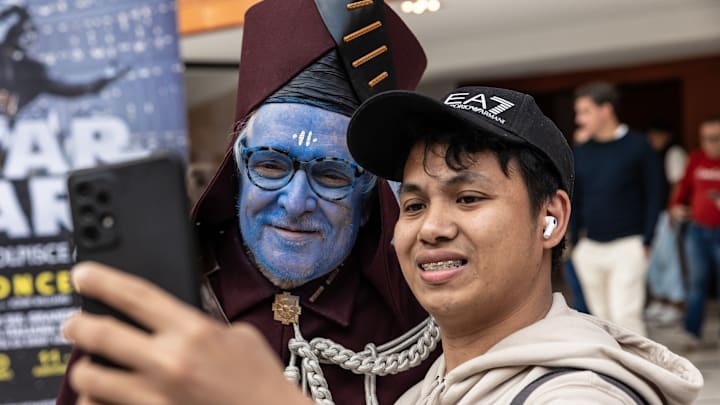Star Wars is facing a challenge it hasn’t encountered in decades: connecting with young men. Variety reports that Disney and Lucasfilm are facing uncharacteristic “boy problems” with young men in the 18-28(ish) age range. This demographic consumes media differently than older fans – or even female viewers of the same age – favoring serialized storytelling, morally complex characters, and interactive experiences. For Lucasfilm, appealing to Gen Z males is about far more than numbers. It’s about reviving a franchise that has struggled to engage younger audiences after the sequel trilogy.
Andor, for example, got rave reviews but didn’t resonate hugely with younger Disney+ audiences. Parrot Analytics notes that the series “has about the same gender breakdown as the overall Star Wars franchise (over 70% male). The show has an older audience compared to Star Wars shows in general (around 60% are over 30 compared to under 50% of the audience for Star Wars series overall).” Meanwhile, The Mandalorian, for all of its pop culture success, still isn’t hitting with men as much as women. Per Parrot, Din Djarin & Co. enjoy a “significantly more female audience than other shows in the franchise.”
Lucasfilm is actively considering how to engage younger audiences, particularly Gen Z males. As Variety points out, “[sources]...say Disney has been seeking new IP and pitches such as splashy global adventures and treasure hunts, as well as seasonal fare like films for the Halloween corridor. The calls come as the Star Wars machine struggles to produce any film project and the superhero genre sheds audiences by the minute.” The article admits, though, that Disney’s share of the Gen Z moviegoing market isn’t exactly dismal. It sits around 10%, on par with both Sony Pictures and Paramount, slightly ahead of Universal, and just behind Warner Bros. Over the past 16 months, four films from four Disney labels have each grossed more than $1 billion, an achievement unmatched by any other studio in the same period.
Yet, the House of Mouse is actively exploring new strategies to attract younger audiences, even after years of riding the coattails of reliable franchises like Marvel and Star Wars. For instance, the brand acquired a $1.5 billion equity stake in gaming giant Fortnite, bringing its characters into the massively popular game. Variety, however, alluded to the fact that Disney does not hold the movie rights to Fortnite itself— surprising, given the potential to funnel Gen Z gamers into theaters.
Digital engagement, though – like the Fortnite partnership – is likely to be key moving forward. Gen Z males don’t just watch; they participate. Memes, theorycrafting, and fan edits dominate social platforms like TikTok and Reddit. Disney’s influencer partnerships and new Webtoons deal can help them bring Star Wars characters into realms where Gen Z men already live online.
The challenge for Lucasfilm is clear: the company must balance legacy storytelling with innovation that will actually resonate with this critical demographic. Reddit feedback suggests that Gen Z males want hands-on activities, not just films and TV shows. One poster shared, “Im part of the astromech / droid builders community, where I'm making my own 3D printed lifesize R2D2 robot as a hobby project. It seems most of the hobbyists are millenials / gen X, but there are some gen Z like me.” Lucasfilm must continue to meet Gen Z men in spaces like this in order to see continued success – Star Wars LEGO sets, for example, bridge the gap between interaction and mere viewership.
The potential reward here is enormous. Successfully appealing to Gen Z males could rejuvenate Disney’s Star Wars slate, expanding the subscriber base of Disney+ and generating excitement for future films, games, and merchandise. If Lucasfilm plays its cards right, the brand can help Disney win back this audience but create a foundation for decades of passionate fandom. Star Wars is now a proving ground for how classic franchises can evolve to meet the tastes of a new generation, one Gen Z guy at a time.
